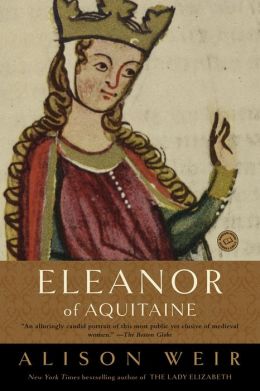I need background in order to really understand Eleanor of Aquitaine: By the Wrath of God, Queen of England by Alison Weir. I did a post a few days ago on life in the High Middle Ages, and this will complement that discussion.
According to an entry in Wikipedia there was an early renaissance in the 12th century:
The Renaissance of the 12th century was a period of many changes at the outset of the High Middle Ages. It included social, political and economic transformations, and an intellectual revitalization of Western Europe with strong philosophical and scientific roots. For some historians these changes paved the way to later achievements such as the literary and artistic movement of the Italian Renaissance in the 15th century and the scientific developments of the 17th century.The entry goes on to quote historian Charles H. Haskins:
The epoch of the Crusades, of the rise of towns, and of the earliest bureaucratic states of the West, it saw the culmination of Romanesque art and the beginnings of Gothic; the emergence of the vernacular literatures; the revival of the Latin classics and of Latin poetry and Roman law; the recovery of Greek science, with its Arabic additions, and of much of Greek philosophy; and the origin of the first European universities. The 12th century left its signature on higher education, on the scholastic philosophy, on European systems of law, on architecture and sculpture, on the liturgical drama, on Latin and vernacular poetry...and this was also a period seeing technological innovations:
- The earliest written record of a windmill is from Yorkshire, England, dated 1185.
- Paper manufacture began in Spain around 1100, and from there it spread to France and Italy during the 12th century.
- The magnetic compass aided navigation, attested in Europe in the late 12th century.
- The astrolabe returned to Europe via Islamic Spain.
- The West's oldest known depiction of a stern-mounted rudder can be found on church carvings dating to around 1180.
This was also a time of expansion of the trading networks of Venice, Genoa and Pisa, especially as the crusades opened new ports to them in the Levant.
 |
| Source |
The increase in trade and the move to paid mercenaries in warfare led to development of credit and banking.
 |
| Source |

No comments:
Post a Comment